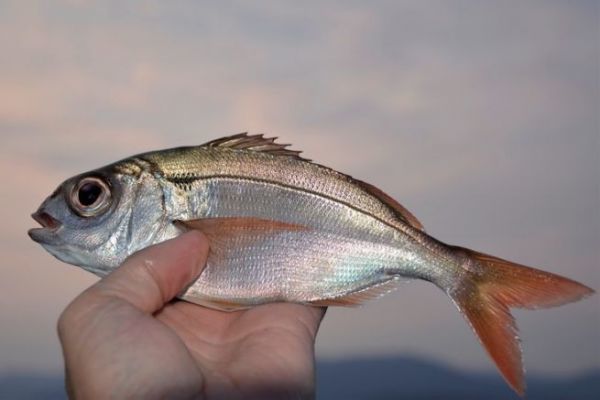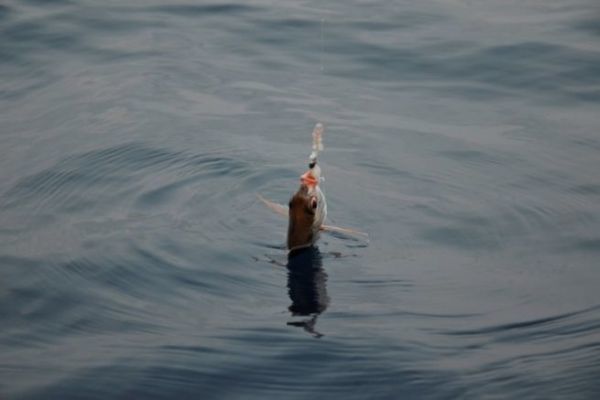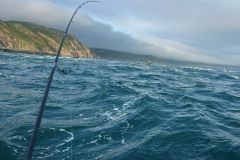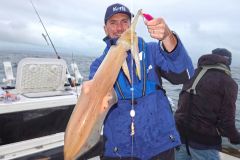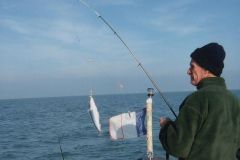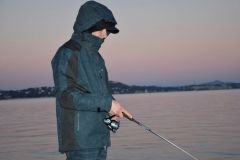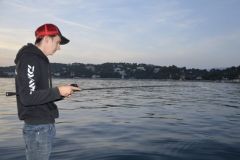A short presentation
The pink sea bream is easily recognized by the pinkish color of its body and the distinctive black spot near its head. It has very large eyes, adapted to life at depth and in low light.
This is an extremely slow-growing fish, taking around 5 years to reach its minimum catch size of 30 cm. The largest individuals can reach 4 kg in about thirty years. It lives mainly at depths ranging from 100 to 700 meters, in schools of several individuals, generally of uniform size. It is a very voracious fish, feeding on other fish, squid and organic waste found in its territory.
Baits to use for red bream
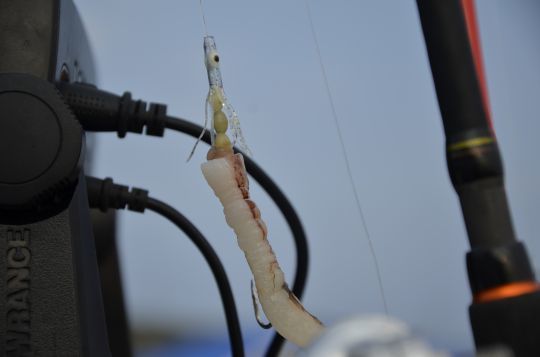
Pink bream is fished mainly with bait, as this is undoubtedly the most effective technique. There are a number of different rigs to choose from, but they are generally multi-hook longlines with lots of glow-in-the-dark beads to increase their attractiveness. This allows the fish to spot the rig visually at long range.
As for the olfactory side of the set-up, small pieces of sardine are often used to release odours and attract schools of fish. Squid, red or white, is a favorite meal of pink sea bream. A tentacle or a slice of the mantle holds the hook well, preventing it from being torn off by the voracity of small fish. You can also use shrimp, very effective, but unfortunately too fragile if not tied in advance with elastic thread.
Finding the right zones
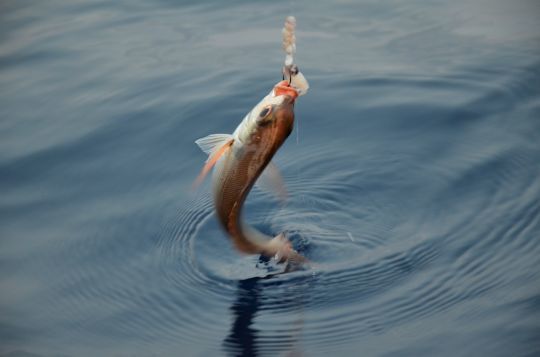
Pink bream can be hard to find, as not all depth sounders are capable of detecting a fish weighing less than 1 kg, 300 meters below the surface. However, schools are sometimes so dense that they can be distinguished. Pink seabream are particularly fond of shelves at the edge of drop-offs, where the current brings them their food without the need to move.
This fish generally prefers rocky bottoms, but can be satisfied with mud or sand if the food in the area is sufficiently abundant. Schools can sometimes be found 30 to 40 meters off the bottom. So don't hesitate to have your rig fished by slowing it down on the way down or on the way up to avoid missing the fish.

 /
/ 

